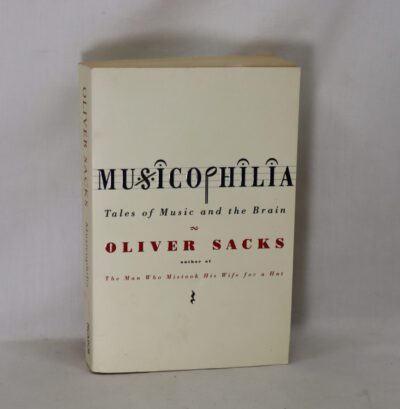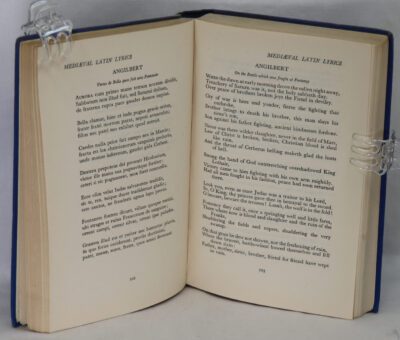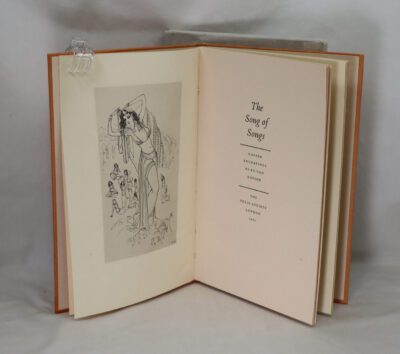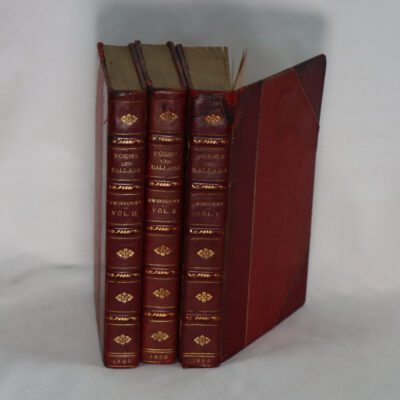Leaving Home.
By Michael Hall
ISBN: 9781452041087
Printed: 1996
Publisher: Faber & Faber. London
| Dimensions | 20 × 26 × 3 cm |
|---|---|
| Language |
Language: English
Size (cminches): 20 x 26 x 3
Condition: Fine (See explanation of ratings)
Your items
Item information
Description
In the original dustsheet. Black cloth binding with silver title on the spine.
-
F.B.A. provides an in-depth photographic presentation of this item to stimulate your feeling and touch. More traditional book descriptions are immediately available.
Music’s confrontation with modernity has been difficult, and has often involved the artist leaving his country for political and social reasons. In the company of a range of performers,this work reflects the difficulties encountered and the audiences’ often reluctant attitude towards them.
Review: The title of this review comes from Simon Rattles’s foreword to Michael Hall’s book. This is the book to accompany the TV series (now available on DVD). Seven of its eight chapters mirror the seven episodes, with the opening chapter providing an introductory hop, skip, and jump through the century’s classical music from the Birmingham premiere of Elgar’s `Dream of Gerontius’ in 1900. But whereas the TV series used much of its time in providing the sound of the music that Simon Rattle discussed, Michael Hall uses this time to expand on each of the subjects. In his preface, he writes how the book “has the same form [as the TV series] and focuses largely on the music featured in the series, but introduces where possible composers and works that failed to make it into the films, the “hard-argued choices”. Hall writes in the first chapter how, “Never before in the history of music has serious music been so estranged from popular culture, and never before has popular culture been so dominant.” It’s impossible, of course, to do anything over the introductory chapter’s twenty-three pages other than to link in a superficial way the history of twentieth-century western music to changes in political, economic, social, and cultural climates. Now and again Hall raises some interesting concepts, such as life in the Middle Ages being viewed in cycles, reflected in the music at that time being “underpinned by the old church modes”; with the coming of the Renaissance, “cyclic time was gradually replaced by linear time”, leading to tonality: “the tonic becomes the goal towards which everything moves.” Later, Hall interestingly contrasts chronometric (linear) time and psychological (circular) time, as represented in Elliott Carter’s cello sonata. I did not find everything to my taste, though. For instance, the chapter on `Colour’ meanders through the concept but then heads tangentially off into the realms of arcane electronica. But the author has much insight to say on the conscious rejection of tradition that took place after the Second World War – `After the Wake’. In its quest for total objectivity in music completely devoid of associations, Hall highlights Boulez, Stockhausen, Nono, Xenakis, Maxwell Davies, and Birtwistle, but also considers Stravinsky, Britten, Tippett, and Dallapiccola. The experiment, of course, was doomed to fail, despite the author speaking of this period being “one of the most fruitful periods in twentieth-century music.” Since the 1960s, Hall’s review identifies extremes of complexity and simplicity in the truly international classical music scene.
Books on twentieth century music have now grown in number since this volume was published in 1996, so it is arguable whether this is the best, or even one of the best choices to make when seeking an overview of the vast numbers of schools that arose in this “wonderful, infuriating century”. There are a number of pieces analysed in quite some detail, from Stravinsky’s `Sacre du Printemps’ to Boulez’s `Rituel in memoriam Bruna Maderna’. Hall’s descriptions often tempt one to explore a composer’s music further, such as that of Charles Ives, but his words can often repel too: I have no wish to listen to the music of Varese, for example. However, the writing can drift into technicalities on occasion, in its discussions of harmonies, cadences, modulations, as well as Dorian and Phrygian modes, and the diatonic and chromatic scales, but there is a glossary at the end to assist (although `ritardando’ is one of the terms missing therefrom). The author tries but can only fail to make the technical discussions interesting to this reader.
The pictures used to illustrate the book are well chosen.
Want to know more about this item?

Related products
Share this Page with a friend












